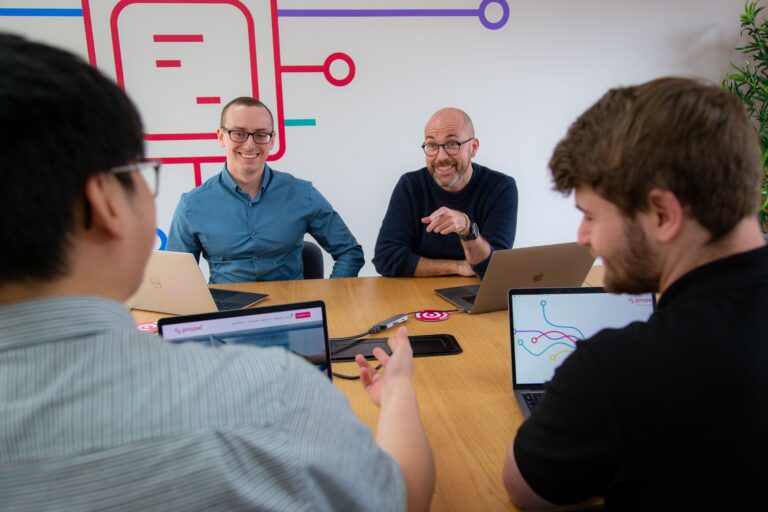Whisper it, but things may just be moving in a more positive direction for employee engagement. Contributor Dr Paul Brewerton, Managing Director – Strengths Partnership.
For the last three years, the CIPD has reported a small year on year increase in job satisfaction amongst UK employees across all sectors, modest in the private sector and more marked in the public sector. While overall, net satisfaction (calculated by subtracting the dissatisfied 16 percent from the satisfied 64 percent) hovers around 48 percent, this has increased from a low of just 40 percent two years ago (CIPD, 2017).
So despite the VUCA headwinds that we are constantly reminded of, and the backdrop of an uncertain economic future wherever we are in the world, something seems to be going right amongst employees’ attitudes to their jobs. In my work with senior HR teams and organisational leaders, I am experiencing a similar trend, with more and more employers starting to orient towards more positive ways of working and asking for advice on practical ways of introducing this to their organisations.
Maybe employers have started listening to the views of the big consultancies, whose voices have got louder on this topic in the past few years: “Look hard at your performance process and push toward simplification and strengths-based assessment and coaching.” encouraged Deloitte in 2015. “Train managers on how to give feedback. The days of traditional appraisals and forced ranking are coming to an end; performance management is now a tool for greater employee engagement.” (Global Human Capital Trends 2015, Deloitte University Press)
The good news is that creating the conditions for more positive ways of working can be fairly straightforward. And evidence shows us that adopting such a way of working increases job satisfaction, engagement and productivity amongst employees (Dubreuil et al, 2016). The challenge remains staying strong in the face of a societal focus on the negative, which can take us off track if we don’t maintain the right environment for employees to thrive.
So how can you take employee engagement to the next level, from employees focused on surviving to those who are thriving? Here are my top tips for creating a positive, productive workplace, based on working with organisations from all sectors and of all sizes.
Engage the top team – you can achieve your goal without the top team’s sponsorship, but it’s much harder. Why not get the organisation’s most senior leaders on board early by using them to road test your planned approach. Start with a workshop, give them tools and techniques to improve the quality and focus of their conversations, turning to the positive for inspiration. I recommend a strengths assessment to kick things off, providing self-awareness and a basis for some honest conversations about who people actually are, rather than who they think they should be. Show your senior leaders how the approach can help improve team working too and you’re away on a solid footing. Get your leaders to advocate for the approach publicly and you’ll be ahead of the game.
Build internal skills – you need your people professionals (HR, L&D, OD) to be your gurus and with that in mind, providing them with the skills to give strengths feedback to individuals and teams is essential. And in training them up, you’re going to have a really engaged group of people, because they’ve been given some great learning they’ll be keen to pass on.
Start shifting the mindset – using your newly-trained group of champions, the next step is to provide feedback to everyone in the organisation on their strengths in the same way that the top team experienced, either 1-2-1, in groups, virtually or self-serve, depending on what works best in your organisation. In getting employees to talk openly about them at their best, when they’re putting their strengths to work, when those same strengths can get overplayed and the consequences, you’re creating the right conditions for more positive ways of working to take root. But don’t leave it there, this is just the beginning.
Skill building for all – what comes next will depend on your plans and strategy people-wise, but what I’ve seen work best are short (max half day) workshops aimed at employees and line managers to enable great conversations to happen. Open, honest, positive conversations about day-to-day performance, development planning, career planning, team working. Which needs everyone to be prepared to give and receive feedback well, get good at spotting the positive in themselves and others, actively manage risks and build new habits around positive ways of thinking and acting. Providing punchy, positive and action-focused sessions on strengths-based coaching skills, engaging development discussions and meaningful career conversations will start to build momentum.
Rewire people processes – don’t leave your people processes as they are. Review them, see where they can be tweaked to introduce more of a positive, strengths feel, in particular your appraisal, development planning and career development approaches. Leaving these untouched could sound the death knell for any well-intentioned positive working initiative, as employees will spot the disparity and start questioning whether the organisation really means it.
Embed embed embed – and as with all changes, particularly positive changes, you now need to get creative and disciplined with your embedding activities to ensure that these new ways of working ‘stick’. My recommends are: to include an aligned approach with team development, encouraging honest and courageous conversations within teams; introduce strengths into your recruitment practices; produce online, self-serve content that people can access as quick reminders (e.g. pre-appraisal, career conversations, etc.); continue to invest in your guru group so that they move towards mastery in developing your teams and leaders; place visual reminders around the organisation of people’s strengths and keep encouraging the active use of strengths in day-to-day working. And with that, you’ll have reached the end of the beginning. And you’ll already be seeing the benefits of more positive, engaged, solutions-focused employees throughout the organisation.
Starting out on a path towards more positive ways of working is simple. Sustaining the momentum takes discipline, planning and the embedding of new organisational habits and behaviours. But what choice do we have if we want to build positive future workplaces where our people can bring their best selves and do their best work, every day? Let’s get to it.
References
CIPD (2017). Employee Outlook: Employee Views on Working Life.
Deloitte (2015). Global Human Capital Trends 2015. Deloitte University Press.
Dubreuil, P., Forest, J., Gillet, N., Fernet, C., Thibault-Landry, A., Crevier-Braud, L. and Girouard, S. (2016). Facilitating well being and Performance through the Development of Strengths at Work: Results from an Intervention Program. International Journal of Applied Positive Psychology, 1, 1-19.









